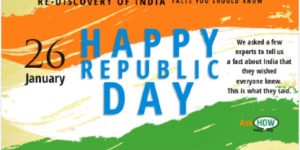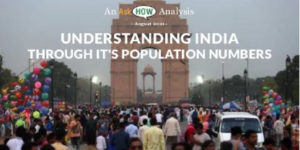Arithmetic is the biggest enemy of farmers !featured
Indian society venerates farmers and rightly so. Food is the most basic human need and farmers provide it. Naturally, we feel a deep sense of unfairness when we think that an injustice has been done to farmers. However, this feeling may prevent us from seeing reality — There’s a limit to how much taxpayer money can go to the kisan. The limit is not because this profession does not deserve the money but because there isn’t enough money. The Arithmetic is cruel yet simple.
The most straightforward way of supporting a class of people is direct transfers. The PM-KISAN scheme from the central government does just that. It promises all farmer families Rs. 6,000 per year. We can all agree that this amount is pitifully small. It is nowhere near sufficient for even the very basic needs. And yet, even at this low amount the government budgeted Rs. 65,000 Crores in 2021–22 for the scheme.

Image by Gerd Altmann from Pixabay
By the way of comparison, here are some other budgeted spends as per the 2021–22 budget
- MNREGS — Rural employment guarantee scheme: Rs. 73, 000 Crores.
- Pradhan Mantri Gram Sadak Yojna — For building rural roads: Rs. 15,000 Crores.
- Jal Jivan Mission- for rural water supply: Rs. 50,011 Crores
A few years ago, a tribal farmer friend of mine told me that in addition to the basic staples that they grow (Rice and Daal), his family of five needs a minimum of Rs. 50 a day. This money is needed for oil, spices, tea and sugar but even at this amazingly low number, the family would need Rs. 18,000/- a year! Three times the amount promised in PM-KISAN! Even at this low amount of Rs. 50 a day, the total amount that the government would need to give out would be more than Rs. 1,80,000 Crores!
And of course we should remember that farming families are not the only poor people in the country. In rural India itself, it could be argued that many many landless families are much worse off than landowning families. Then there are urban poor. If the country were to provide cash transfers to landless families and to urban poor in addition to farmers, then the money needed would be huge without the sum transferred being meaningful.
But what if we targeted selectively? After all, some farmers are pretty rich. This is true. ‘Farmer’ is a very broad term. Calling both, an Apple orchard owner and a tribal who owns un-irrigated land, farmer is misleading. It is similar to calling both an Investment Banker and a waiter at a roadside tea stall, ‘service sector workers’. The classification is factually correct but not at all useful in most contexts. So, targeting only some farmers selectively makes sense at first glance.
It turns out that we do have schemes which benefit only a few farmers. Take the food subsidy and Minimum Support Price (MSP). As we have explained in detail in this post, the subsidy goes to both consumers and farmers but farmers who get it do benefit from it. But the farmers who take advantage of MSP are a very small fraction of the total. The last official estimate is 6% (it may have gone up a bit in the recent years). This support is meaningful for the farmers that get it — the clearest evidence is that they have been protesting for months for a law that guarantees them this support. But the food subsidy is costly. The budgetary provision for it in 2021–22 was Rs. 2,42, 836 Crores. What is more, most of this amount does not go to the poorest farmers as is explained here.
And that is the tyranny of Arithmetic. There are too many farmers (and poor) in the country for any scheme that targets all them to have meaningful sums. If the support has to be meaningful, the bill becomes huge — too big for the government finances — if it is provided for all farmers.
So what do we do to increase the income of farmers? We have analysed this issue in the past and our recommendations can be found here. The long list of recommendations includes making water available, helping with efficient irrigation techniques, propagating better agriculture techniques, helping with credit and insurance and making markets less exploitative. The list also includes providing better infrastructure, schooling and health care as this can take a lot out of a farming family’s income.
However, the relative importance of different measures varies from region to region. A measure that benefits a coffee grower may have no meaning for a Rajasthani farmer for example. Sometimes neighbouring villages or even neighbouring farms may have different priorities. Most of the measures that benefit farmers would be very local. Each of them will take time to implement, sometimes a few years. And that is a problem for us — the people of the chattering classes.
If we perceive an injustice, it makes us uncomfortable. We want reassurance that the injustice is being addressed quickly. Or that there is a villain we can identify who is not doing their job. Or a hero who is solving all problems. Issues in farming are far too local for doing that. Nobody will be interested in your Tweet about desilting of a weir even if it is benefiting tens of farmers. Nobody would care if you announced that a particular village has started growing Okra and is exporting it with the help of a NGO. A state government’s program on water conservation may go unnoticed and we may never know if it actually made a difference. Those would be real changes but would interest very few people. We, the chattering classes, just have to suck it up and live with this misfortune.
If you liked what you read, please do share. You may find my past writings on this subject interesting.
As always, comments, criticism and praise are all welcome — preferably on the comments section of this blog!
Author –
Yogesh Upadhyaya
(Yogesh Upadhyaya is one of the founders of AskHow India. Blogs are personal views.)
You can follow AskHow India (@AskHowIndia) or me (@uppi89) on twitter or me on LinkedIn



